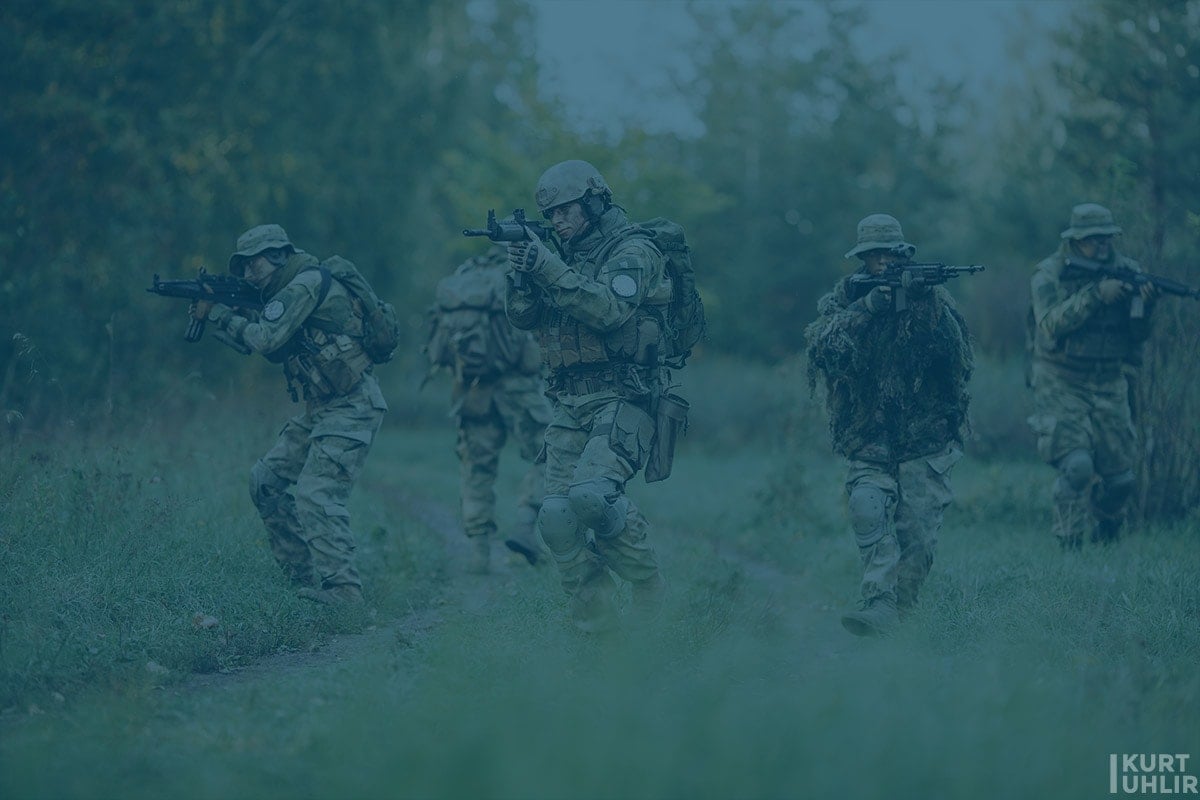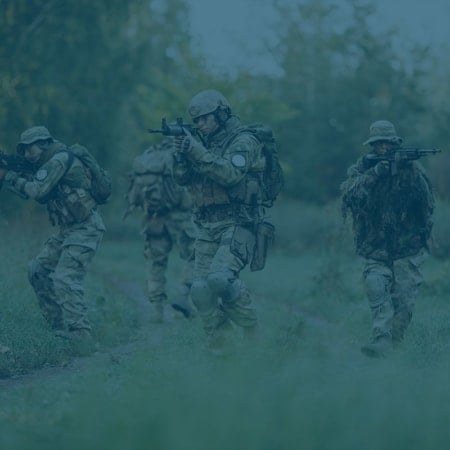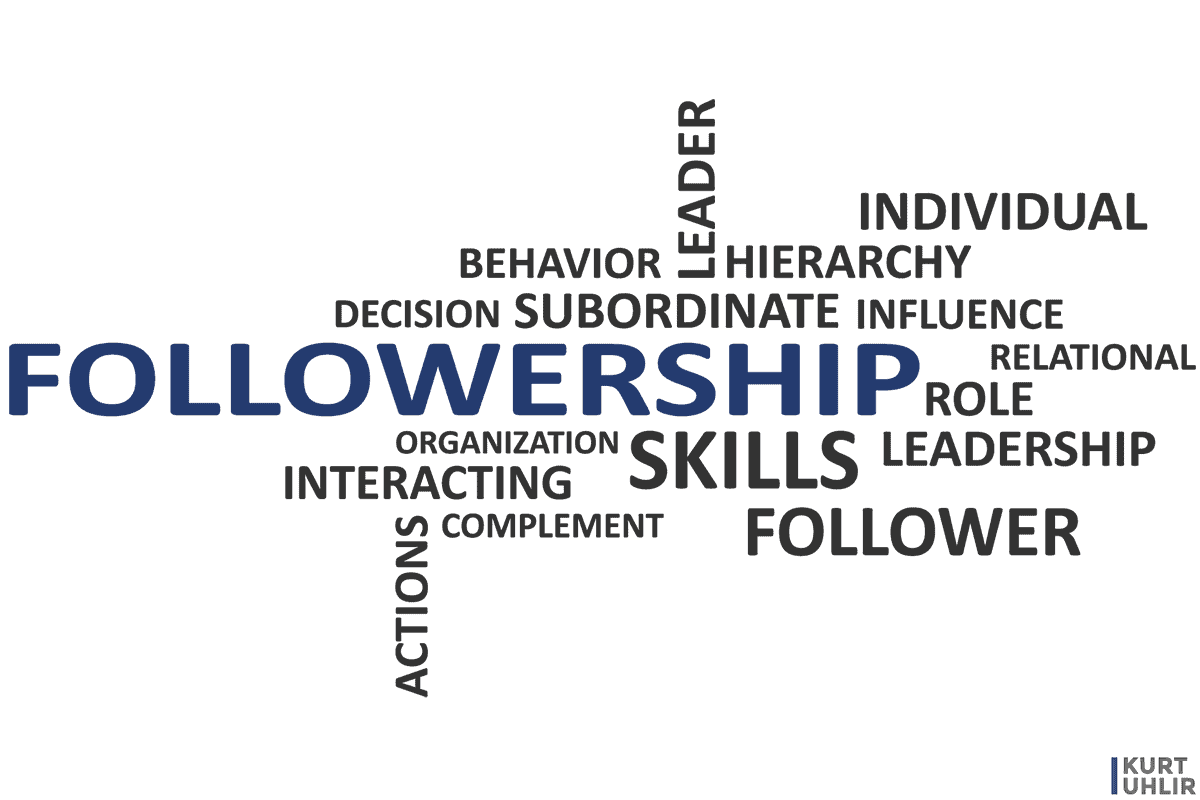Understanding Servant Leadership in the Army: The High-Performance Leadership Style That Creates Unstoppable Teams
Most leaders get it backwards.
They think leadership means commanding from the top, issuing orders, and expecting blind compliance. But the most effective military units—and the most successful companies I’ve scaled—operate on a completely different principle: servant leadership Army models where leaders serve their people first.
This isn’t soft management. This is servant leadership in its most demanding application, and it’s one of the most powerful models for creating high-performing teams under pressure.
After 20+ years building and scaling organizations, while being blessed to work with many former military, from around the world, I’ve seen this principle work everywhere from combat zones to conference rooms. The best army leaders don’t just command—they serve. And that service creates something remarkable: teams that fight harder, think faster, and win more often.
I’ve compiled my notes from working with dozens of former special forces, many more officers (commissioned and NCOs), and more enlisted than I can count. While I saw many common themes from our experiences building companies to the stories they would tell of their time serving our country (and other countries), I sat back down with a few of them as part of the research for this article to make sure I fully understood the principles they were taught and how servant leadership truly shows up in the rigid military structure.

What Servant Leadership Army Actually Means
Servant leadership army principles flip the traditional power structure upside down. Instead of leaders sitting at the top of the hierarchy, they position themselves to serve—supporting, enabling, and empowering everyone in their organization.
Here’s what this looks like in practice: Military leaders and army leaders focus on their soldiers first, leading by example to accomplish the mission.
The NCO Creed emphasizes that soldier welfare represents one of the two basic responsibilities of non-commissioned officers. This aligns perfectly with servant leadership principles, reinforced by the Soldier’s Creed that guides every American soldier.
NCOs (non-commissioned officers) are considered the backbone of leadership within the armed forces and the United States Army. But servant leadership extends this backbone concept throughout the entire military structure, creating a community where every soldier can lead.
Servant leaders in the military consider input from fellow soldiers when making decisions. They take responsibility for team success and create genuine camaraderie—not the forced variety that comes from shared hardship alone. This approach to building relationships transforms how military service operates.
The term originated from Robert Greenleaf in the early 1970s, but it has gained significant traction recently in both the military and business world. Why? Because decentralizing leadership roles—where high-ranking personnel serve those below them—creates more resilient, adaptable organizations that can win America’s wars and succeed in any mission.
This approach builds mutual trust between leaders and their teams. And in military settings where lives depend on split-second decisions and absolute mutual trust, that foundation becomes everything for the United States Army and all armed forces, both within the US and in many other (not all) countries.
Note: You’ll notice I switch between army, Army, and military. While the U.S. Army is more public about using the term, which is what encouraged me to write the guide, many other branches in the U.S. and in other countries use the term, so I may switch between them. This applies to all.
The Six Core Principles That Drive Results
Robert Greenleaf and the Greenleaf Center for Servant Leadership identified six principles that make servant leadership work. These aren’t theoretical concepts or just words—they’re practical tools that transform how teams operate and how followers develop into great leaders:
Persuasion Over Power
Servant leaders don’t rely on traditional leadership models or hierarchical decision making. Instead, they use logical persuasion to influence people and gain commitment from followers.
This isn’t about manipulation. Military servant leadership uses persuasion to help team members see their perspective while remaining open to better ideas. The process creates transparency where leaders can replace their approach with superior alternatives when convinced—a humble approach that builds trust.
This mirrors what I’ve seen building high-performance marketing and operations teams in the business world. The best ideas don’t always come from the top. Leaders who create space for input get better outcomes and develop future leaders.
Healing the Environment
Military settings are inherently high-stress. Soldiers face mental health challenges that can devastate both individual performance and team cohesion, affecting their well being and ability to serve.
Servant leadership addresses this by creating supportive environments where people can serve fellow soldiers effectively. Leaders focus on improving their subordinates’ well being, taking a selfless service approach that enables better work-life balance even in demanding circumstances of military service.
Foresight in Decision Making
Leaders accumulate knowledge from experience dealing with different situations and teams. Servant leadership leverages this foresight while collaborating with team members to develop solutions for evolving challenges, building community through shared decision making.
The goal isn’t for leaders to have all the answers. It’s to empower teams and develop followers so leaders don’t have to rely solely on their own ability. This approach helps people develop and perform at higher levels.
Self-Reflection and Growth
Greenleaf believed leaders should analyze their thought processes and understand their impact on subordinates. Self-reflection reveals weaknesses and strengths, helping servant leaders understand how they fit into the team and what roles they can serve most effectively.
This principle resonates deeply with my experience scaling organizations. The leaders who grow fastest are those who can honestly assess their own capabilities and focus on serving others rather than seeking power. I’m keenly aware that I both have gaps in what I see as well as in my skillset. Knowing this allows me to bring others onto our teams to fill those gaps and bring up different perspectives to help us find the best path faster than if I were trying to figure it all out myself.
Vision Conceptualization
Clear vision gives servant leaders a sense of purpose and direction for their mission. Knowing the vision makes it easier to understand where you want to lead your team, aligning personal goals with both greater causes and organizational objectives.
For enlisted soldiers, one overarching objective is often developing their military career and leadership potential. As the son-in-law of an Army lieutenant colonel and the son of an Air Force NCO, I’ve heard countless stories about how career progression often comes up in post-op reviews.
Understanding this vision helps leaders determine what actions will accelerate progress toward that goal and build future leaders.
Facilitating Growth in Others
Servant leadership commits to developing both leaders and followers. The style recognizes the value people have to offer and provides the support they need to grow, demonstrating commitment to their success.
Being a servant leader means understanding people and creating the conditions for their growth. This focus helps followers become great leaders themselves, expanding the organization’s leadership capacity.
Why Servant Leadership Works in Military Hierarchies
The main objection to servant leadership army models is obvious: Won’t this break down the conventional military hierarchy?
The answer is no—when implemented correctly with proper understanding of how the servant leader collaborates, while maintaining structure at all times.
Servant leaders collaborate with their team members while using discipline to keep the hierarchy intact. Rather than weakening the command structure, servant leadership creates more effective military units by enhancing decision-making within the system.
This approach increases accountability and allows team members to share in the unit’s success. Military servant leadership works because the leader shares power, puts the needs of others first, and focuses primarily on serving their soldiers while maintaining mission focus. It’s not the leader who will accomplish the mission. It is the actions of the individual soldiers in their unit. The leader’s job is to insure that they are best able to accomplish the desired outcomes.
The characteristics that make this work in both the army and business world include:
Exceptional Communication Skills: Servant leadership requires individuals who can communicate clearly and listen actively. Leaders who communicate well can gather more information and understand more, taking opinions and ideas from team members into consideration during decision making.
Good communication helps servant leaders build trust and provide support for soldiers, both mentally and physically, during combat situations. Through effective communication, army leaders can identify team members with leadership potential and help them develop their ability, creating relationships that last beyond their first deployment.
Deep Empathy: Servant leaders need emotional intelligence to understand different perspectives within their units. The servant leader focuses primarily on addressing the needs of others first, making subordinates feel valued and supported.
This empathy builds mutual trust, which becomes critical for military unit success. It also helps in building relationships in highly structured environments, creating a community where everyone can serve effectively.
Active Mentorship and Commitment: Military servant leadership commits to people’s growth and development. Servant leaders act as mentors to their team members, developing resources and allocating time to help individuals leverage their strengths and address weaknesses.
Great leaders get involved in career and skill development. They provide inspiration and make decisions informed by army values like respect, honor, and selfless service. Most importantly, they mentor through action—demonstrating behaviors for team members to emulate rather than relying on just words.
Situational Awareness and Adaptability: Servant leaders understand their own strengths and weaknesses, which makes them more efficient. Awareness helps Army leaders understand what roles they can execute independently and what roles fit the team better.
This awareness improves adaptability and speeds decision-making, especially during crises. Servant leaders focus on long-term military objectives and create plans to help their soldiers reach those goals while serving fellow soldiers.
Selfless Service: The servant leader shares power (think decision-making, not authority), puts the needs of others first, and focuses primarily on individual and community growth. These leaders don’t prioritize personal welfare—they make decisions for the greater good and demonstrate selfless service.
They share common objectives with their team members, which helps focus efforts on the mission rather than politics. This commitment to serve creates trust and helps develop followers into future leaders.
The Real Challenges You’ll Face
Despite its advantages, implementing servant leadership army principles comes with genuine obstacles that leaders must understand:
Limited Awareness: Many military personnel still don’t fully understand servant leadership concepts or servant leadership theory. It’s challenging to employ servant leadership when troops aren’t familiar with the principles or see them as just words without substance.
Leaders must build understanding and commitment to help followers see beyond traditional leadership models.
Communication Barriers: Unlike office environments, military settings don’t always provide frequent interaction between leaders and subordinates, especially as you rise through the ranks. Poor communication channels make it difficult for leaders and subordinates to build relationships that support building community.
This affects the ability to serve fellow soldiers effectively and limits opportunities for building relationships that create mutual trust.
Traditional Military Culture: Some servant leadership principles conflict with traditional leadership and military discipline expectations. Implementing concepts like active listening or soliciting feedback can be difficult when subordinates must follow orders regardless of their opinions.
The collaborative decision making process in servant leadership takes time due to enhanced team involvement. But military operations often require quick decision making where leaders must act decisively and followers must execute orders with greater urgency.
Emotional Intelligence Gaps: Emotional intelligence and empathy are necessary for successful servant leadership implementation. Army leaders who lack emotional intelligence may struggle to become effective servant leaders or develop followers properly.
Developing emotional intelligence in highly structured military environments is inherently challenging but essential for leaders who want to serve effectively.
Having read (probably too much) about Dwight Eisenhower, I love the movie Ike: Countdown to D-Day because it attempts to show how he balanced:
- a strict adherence to authority
- a need to gather as much information and different perspectives as possible
- the needs of the soldiers to accomplish each outcome he needed them to accomplish
- the true cost of what was needed to save the free world.
Resource and Training Limitations: Military settings may lack adequate resources or time for effective servant leadership implementation. Personnel may not receive the training needed to work effectively with their superiors or understand how to employ servant leadership principles.
Public facing military training typically focuses on combat situations rather than servant leadership models. Limited resources and training gaps persist, though many soldiers learn about servant leadership starting from their first deployment and continue developing understanding throughout their military service.
The Compound Benefits That Change Everything
The advantages of implementing servant leadership military principles create cascading positive effects throughout the organization:
Leadership Development: The collaborative nature of servant leadership allows superiors to pass leadership traits to their subordinates, including integrity, judgment, initiative, endurance, courage, responsibility, and increase the chances the mission is completed—all key Army values.
True leaders help subordinates understand the importance of these traits and develop them over time, creating stronger future leaders who can serve effectively. This commitment to development helps people develop and perform at higher levels.
Accelerated Career Development: Servant leaders demonstrate commitment to improving their subordinates’ careers by acting as mentors and stewards. More than traditional leadership models, servant leadership encourages potential Army leaders to actively develop their subordinates’ careers and leadership potential.
Successful servant leaders involve soldiers in decision-making, often through understanding the situation, and help them acquire the ability necessary for growth. The United States Army emphasizes continuous leadership growth through training and mentorship, creating opportunities for every soldier to advance and serve at higher levels.
Elimination of Leadership Gaps: Servant leaders perform their duties so that subordinates can emulate them and develop into great leaders themselves. This model helps eliminate leadership vacuums when superiors are unavailable during crises that need solving.
Servant leaders can identify their future leaders easily due to time spent collaborating with them, preparing every follower to step up when needed and serve the mission effectively.
People-Focused Culture Creation: Servant leadership creates genuinely people-focused cultures throughout the organization. It’s not about people first from a feel-good perspective. It is an acknowledgment that it is people who implement the actions needed. It is people who have to (individually) deal with how the mission was completed. It is people who will train the next level of soldiers for the future. It is people in the families at home who are supporting those deployed.
Servant leaders care for soldiers under their charge, requiring empathy and close attention to physical and mental well-being.
So, do they care about their people because it is a moral or the “right thing” to do? That is the reason for many. However, even if this is not a moral thing for the individual, it is an acknowledgment that the mission cannot be completed without knowing and addressing the people cost.
Army leadership is characterized by strong community and support among soldiers (and veterans), aligning with servant leadership principles. The Army’s culture embraces seven core Army values: loyalty, duty, respect, selfless service, honor, integrity, and personal courage—fundamental principles that guide every American soldier.
Healthier Working Environments: Thousands of Army leaders have been discharged for creating toxic working environments during military service. It’s not the attitude or how their troops feel that drives this. It’s because highly authoritarian decision-makers generally have more blind spots than their peers, and blind spots get people killed and cause operations to fail.
Servant leadership breaks this pattern by making leaders more open to new information and making the entire team more accountable for the outcomes.
The servant leader shares knowledge, puts the needs of those under your command to the front of their mind, and involves soldiers in decision making. This builds mutual trust between leaders and troops, creating conducive working environments that help Army leaders achieve more with their teams and better serve fellow soldiers.
How to Develop Servant Leadership Skills
Army leaders often struggle to implement servant leadership due to the traditional military hierarchy and perceptions they may have about the way things work.
Here are proven approaches for becoming a successful servant leader while maintaining military effectiveness:
Balance Structure with Collaboration: Successful leaders that know how to get things done know how to collaborate and inspire healthy competition among team members while maintaining the necessary structure and discipline required for military service.
Great leaders understand when to work with subordinates and when to give direct orders. They engage with troops and participate in building community exercises while maintaining military standards and focus on the mission.
Now, remember, building community in a military setting is very different than in a corporate environment, but the key is that you have to be intentional in planning activities to build this community.
Balancing military structure with servant leadership requires advanced emotional intelligence—an ability that’s valuable in both military and business world applications.
Adapt Your Leadership Style: Willingness to adapt your leadership style, in any situation, is essential for servant leadership success. Each organization or group has different needs, so you need an understanding of what leadership approach works best to meet those needs and serve effectively.
Servant leaders adapt their style to better suit their team’s needs by being more flexible, open to input and feedback from followers, and focused on collective success rather than personal power. This commitment to adaptability helps develop followers and build community.
Practice Authentic Leadership: Servant leaders can’t succeed without authenticity and honesty with their subordinates. Successful servant leaders provide clarity and demonstrate transparency in every situation, avoiding just words without action. There are times when leaders cannot be fully transparent about the risks or reasons, but they will always be truthful.
Leaders will be known by their actions and the decisions they’ve struggeled with that they could not share wit their teams.
Authenticity is critical for servant leaders. Without authenticity, followers won’t develop trust, and leaders won’t succeed in building relationships. Being authentic builds mutual trust and encourages self-reflection during crises while creating positive attitude throughout the organization.
What does this look like in person? Sometimes it means acknowledging (perhaps after the deployment) that the weight of the decisions (or the loss of life) is hard. I respect the decisions of those that feel they cannot share everything (the weight of leadership) with those under their command. However, authentic leaders still find a way to share the weight and thought that went behind the decision, and how the consequences of those decisions affect them afterward.
Genuinely Care for Your People: Provide support to subordinates when needed by listening to them and developing close relationships based on mutual trust. This enables leaders to understand their soldiers and support their development of the skills necessary for their careers and military service.
Caring for others also enables leaders to recognize their own weaknesses and strengths, making self-improvement easier. Leaders with a commitment to team member growth are more likely to identify leadership potential and determine which followers can handle additional responsibility.
Understand Individual Development: Successful commanders require an understanding of how soldiers develop over time. Considering subordinates’ skills and abilities helps Army leaders understand how to guide them through different career stages in military service.
Understanding soldier development creates opportunities for soldiers to explore different approaches to career advancement. Servant leaders can utilize military settings to lead individuals from diverse backgrounds, fostering community and eliminating bias.
Create Open Communication Channels: Great leaders listen to team members and consider their perspectives, approaches, and ideas during decision-making. To employ servant leadership effectively, you need to establish open communication channels with subordinates and build trust.
Team members should feel comfortable talking to you and bringing up issues that affect their well-being. Soldiers often experience significant stress from their duties, which can impair how they work with peers and serve fellow soldiers effectively.
Active listening and open communication allow leaders to understand what roles certain soldiers can handle and when they need help, creating building relationships that support both greater causes and individual growth.
Servant Leaders Set the Standard
Most armies’ cultures has always emphasized service, but servant leadership takes this further. When leaders must understand that their role is to serve first, everything changes about how the organization functions.
Servant leaders set examples that inspire followers to become future leaders themselves. They demonstrate through action—not just words—what it means to put the needs of others first and serve both greater causes and immediate mission requirements.
It’s not about simply meeting the needs of others as the end goal. This approach to leadership acknowledges that it is those people that will accomplish the “jobs to be done” and reach the outcomes the organization needs. This approach realizes that your team will never be able to accomplish more than the capacity of their skills and bandwidth, so it is in the organizations best interests to develop those.
This approach creates a positive attitude throughout the organization and helps develop people who can perform under pressure while maintaining focus on serving fellow soldiers and achieving the mission.
In my experience scaling organizations across six continents, the same principles apply whether you’re leading soldiers in combat or building growth teams to drive revenue at a private-equity backed company. Leadership is service – to customers. Service builds mutual trust. Trust creates performance. And performance wins both wars and markets.
From Military to Business: Universal Leadership Lessons
The principles that make servant leadership Army models work translate directly to business world applications. Having scaled multiple organizations from startup phases to nine-figure exits, I’ve seen how these same dynamics play out in corporate settings.
High-performing teams—whether in combat or conference rooms—share common characteristics. They develop mutual respect with their leaders. They feel empowered to contribute and grow. They know their development matters to the organization and what the team will be able to accomplish.
You’ll never outgrow the capabilities of your team.
And they understand how their individual success connects to both greater causes and collective achievement.
Servant leadership creates all of these conditions by design, helping people develop and perform at levels that seemed impossible under traditional leadership models.
The military has refined these approaches under the most demanding circumstances possible. Leaders who can employ servant leadership principles in business settings gain access to the same force multipliers that make elite military units so effective at building community and achieving mission success.
The Bottom Line
Servant leadership army principles aren’t about being soft or abandoning hierarchy. Strong teams are built on mutual respect for everyone’s skills, a proactive approach to problem-solving, and a shared commitment to service.
The best army leaders understand that their job isn’t to be the smartest person in the room—it’s to help everyone else in the room become smarter, stronger, and more capable of achieving the mission.
This principle applies whether you’re leading soldiers in combat or scaling a marketing team to drive $100M+ in revenue. Great leaders serve first. They serve their team, knowing their team MUST serve your customers.
Service builds mutual trust. Trust creates performance that helps people develop and perform beyond expectations.
The question isn’t whether servant leadership works in demanding environments. The question is whether you’re ready to lead by serving, developing followers into future leaders, and building relationships that last.
Leaders must commit to this approach if they want to create organizations that can win America’s wars, dominate markets, and serve both greater causes and individual growth.
What would happen if you started treating leadership as a privilege to serve rather than a position to exploit? In my experience scaling teams and building community, that shift changes everything—from first deployment through entire careers in both military service and the business world.
Frequently Asked Questions About Servant Leadership Army
There are often numerous questions related to servant leadership army models, and understanding these helps clarify how this approach works in practice:
What is the concept of servant army leadership?
Servant leadership army models emphasize putting the needs of the team or subordinates above those of the leader. The approach has gained considerable popularity in military circles due to its emphasis on service rather than authority. The servant leader shares decision-making, keeps ultimate responsibility, puts the needs of others first, and focuses primarily on helping fellow soldiers develop and succeed. The concept was around long before it was coined by Greenleaf in the 1970s – he just gave it a term.
This approach fosters mutual trust between army leaders and their soldiers while maintaining military discipline and ensuring mission focus. Leaders must understand that their role is to serve their people first, which actually strengthens rather than weakens military effectiveness.
What are examples of servant leadership in the Army?
Servant leadership in the military takes many forms throughout military service. For example, servant leaders help their subordinates acquire leadership potential, develop their military careers, and gain new skills while serving fellow soldiers effectively.
Army leaders practicing servant leadership implement solutions that help their troops become more capable. They focus on building community within their units, creating positive attitude even under stress, and ensuring soldiers develop the ability to lead others. These leaders demonstrate commitment to their people’s growth while maintaining focus on the mission and army values. Mission first, people always.
Servant leaders set examples through their actions, mentor soldiers from first deployment through advanced careers, and create environments where people develop and perform at higher levels.
Why is servant leadership important in the Army?
Servant leadership is important in any army because it creates collaborative teams that can accomplish more while building stronger community bonds. Soldiers sharing mutual trust have a greater ability to fight effectively and take care of each other in dangerous situations.
This approach helps the United States Army and all armed forces develop future leaders at every level. When the servant leader shares power and involves followers in decision making, it creates organizations that can adapt quickly and win America’s wars more effectively.
Military servant leadership also addresses the well-being of soldiers, reducing toxic leadership that has plagued some military units in a way that reduces the ability for the team to accomplish its mission. By focusing on growing fellow soldiers and building relationships, leaders create healthier environments that improve both morale and mission effectiveness.
What is the mindset of a servant army leader?
The mindset of a servant army leader is service before power. The servant leader focuses primarily on making decisions for the greater good of the long-term mission rather than their own personal advancement.
These leaders don’t let personal objectives influence how they fulfill their duties or compromise their commitment to serving others. They understand that part of their role is to develop followers into future leaders while maintaining focus on both immediate mission requirements and military readiness for the future.
Great leaders in the army approach their responsibility with humility, understanding that true strength comes from empowering others rather than raw authority. They see leadership as stewardship and focus on leaving their units stronger than they found them.
How can servant leadership bring trust back to the army?
Servant leadership enables military personnel to foster stronger relationships with their superiors through authentic interactions and community building. The process involves active listening and seeking to understand what others may see that you may be missing.
Servant leaders gain mutual trust by being honest with their subordinates and creating open communication channels, in a timing and way that fits with the chain of command. Rather than relying on just words, they demonstrate their commitment through actions that consistently put the needs of others first.
This approach addresses toxic leadership problems that have affected military units. When Army leaders genuinely care about their soldiers’ capabilities and what they need to accomplish the mission, it creates a positive attitude throughout the organization and restores confidence in military leadership.
Building relationships based on mutual trust rather than fear creates stronger, more resilient military units that can better serve fellow soldiers and accomplish their mission effectively.












